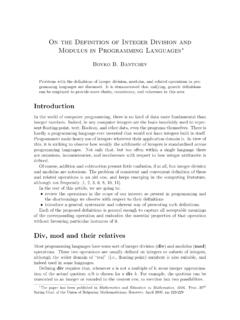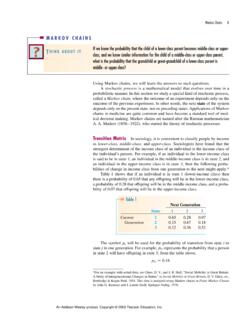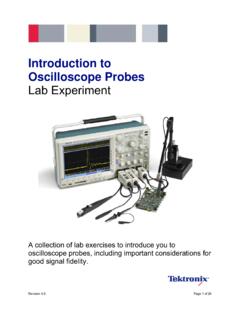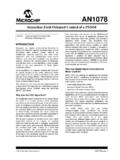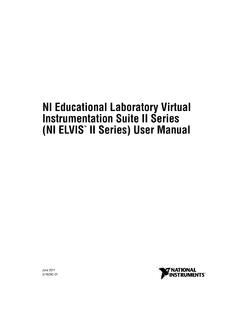Transcription of The A-Z of Programming Languages
1 The A-Z of Programming Languages (interviews with Programming language creators)Computerworld, 2008-20101 Ada:S. Tucker Taft..1 Arduino:Tom Igoe..5 ASP:Microsoft..9 AWK:Alfred Aho..11 AWK & AMPL:Brian Kernighan..15 Bash:Chet Ramey..17C#:Anders Hejlsberg..20C++:Bjarne Stroustrup..27 Clojure:Rich Hickey..35 ColdFusion:Jeremy Allaire..38D:Walter Bright..41 Erlang:Joe Armstrong..44F#:Don Syme..48 Falcon:Giancarlo Niccolai..51 Forth:Charles Moore..59 Groovy:Guillaume Laforge..61 Haskell:Simon Peyton-Jones..65 INTERCAL:Don Wood..76 JavaScript:Brendan Eich..79 Lua:Roberto Ierusalimschy..84 MATLAB:Cleve Moler..88 Modula-3:Luca Cardelli..91 Objective-C:Brad Cox.
2 93 Perl:Larry Wall..961 When the table of contents is being read using a PDF viewer, the titles link to the Web pages of the originalpublications, and the page numbers are internal linksPython:Guido van Rossum..100 Scala:Martin Odersky..105Sh:Steve Bourne..109 Smalltalk-80:Alan Kay..116 Tcl:John Ousterhout..121 YACC:Stephen Johnson..123 Ada: S. Tucker TaftS. Tucker Taft is a Chairman and CTO of SofCheck. Taft has been heavily involvedin the Ada 1995 and 2005 revisions, and still works with the language today as botha designer and spoke to Taft to learn more about the development and maintenanceofAda, and found a man deeply committed to language design and developmentHow did you first become involved with Ada?
3 After graduating in 1975, I worked for Harvard for four years as the system mother for thefirst Unix system outside of Bell Labs. During that time I spent a lot of time with some of thecomputer science researchers, and became aware of the DOD-1 language design had been fascinated with Programming language design for several years at that point, andthought it was quite exciting that there was a competition to design a standard language formission-critical software. I also had already developed some strong opinions about languagedesign, so I had some complaints about all of the September of 1980, a year after I left my job at Harvard, I returned to the Boston areaand ended up taking a job at Intermetrics, the company responsible for the design of the Redlanguage, one of the four semifinalists and one of the two finalists for DOD-1.
4 By that time [thelanguage was] renamed toAdain honor of Lady Ada Lovelace, daughter of Lord Byron andassociate of Charles Intermetrics had shortly before lost the competition to Honeywell-Bull-Inria, theywere still quite involved with the overall process of completing theAdastandard, and were inthe process of bidding on one of the two majorAdacompiler acquisitions, this one for the AirForce. After a 6-month design period and 12-month public evaluation, the Intermetrics designwas chosen over two others and I became first the head of theAda Program Support Environmentpart, and then ultimately of theAdacompiler of the requirements of the Air ForceAda Integrated Environmentcontract was to writethe entire compiler and environment inAdaitself, which created some interesting bootstrapproblems.
5 In fact, we had to build a separate boot compiler inPascal, before we could evencompile the real compiler. By the time we delivered, we had written almost a million lines ofAdacode, and had seenAdago from a preliminary standard to a Military standard (MIL-STD-1815),to an ANSI standard (Ada83), and finally to an ISO standard (ISO 8652,Ada87). I also hadto go through the personal progression of learning the language, griping about the language, andthen finally accepting the language as it was, so I could use it , in 1988 the US Department of Defense announced that they were beginning theprocess to revise theAdastandard to produceAda9X (where X was some digit between 0 and9).
6 I quickly resurrected all my old gripes and a few new ones, and helped to write a proposal forIntermetrics to become theAda 9X Mapping/Revision Team(the government s nomenclature forthe language design team). This time the Intermetrics team won the competition over severalother teams, including one that included Jean Ichbiah, the lead designer of the originalAda83standard. I was the technical lead of the Intermetrics MRT team, with Christine Anderson ofthe Air Force as the manager of the overallAda9X project on the government are the main differences between the original Ada and the 95 revision?The big threeAda95 language revisions were hierarchical libraries, protected objects, and object-oriented Programming .
7 Hierarchical libraries referred to the enhancement of theAdamodulenamespace to take it fromAda83 s simple flat namespace of library units, where each unit hada single unique identifier, to a hierarchical namespace of units, with visibility control betweenparent and child library objects referred to the new passive, data-oriented synchronization construct that wedefined to augment the existing active message/rendezvous-oriented task construct Programming was provided inAda95 by enhancing an existing derived-typecapability ofAda83, by supporting type extension as part of deriving from an existing type, as1well as supporting run-time polymorphism with the equivalent of virtual functions and run-timetype prompted the Ada revision in 95?
8 ISO standards go through regular revision cycles. Generally every five years a standard must bereviewed, and at least every ten years it must be revised. There were also some specific concernsabout the language, though generally the language had turned out to be a reasonably good fitto the needs of mission-critical software particular,Ada s strong support for abstract data types in the guise of packages and privatetypes had emerged as a significant step up in software engineering, andAda s run-time checkingfor array bounds and null pointers had helped catch a large class of typical Programming errorsearlier in the there a particular problem you were trying to solve?
9 Object-oriented Programming was growing in popularity at the time, though it was still notfully trusted by much of the mission-critical software development community. In addition, theAda83 tasking model was considered elegant, but did not provide the level of efficiency orcontrol that many real-time system developers would have theAda9X revision process began, a requirements team was formed to solicit explicitcomments from theAdacommunity about the language, both in terms of things to preserve andthings to you faced any hard decisions in your revision of Ada?Every language-design decision was pretty hard, because there were many goals and requirements,some of which were potentially conflicting.
10 Perhaps the most difficult decisions were politicalones, where I realized that to achieve consensus in the language revision process among the ISOdelegations, we (the design team) would have to give up some of our personal favourite you still working with the language now and in what context?Yes, I am still working with the language, both as a user and as a language designer. As youmay know the newest version of the language, known asAda2005, just recently achieved officialstandardization. TheAda2005 design process was quite different from theAda95 process,becauseAda2005 had no Department of Defense supported design team, and instead had torely on strictly voluntary contributions of time and , I am extremely proud of the accomplishments of theAda2005 design workinggroup.
